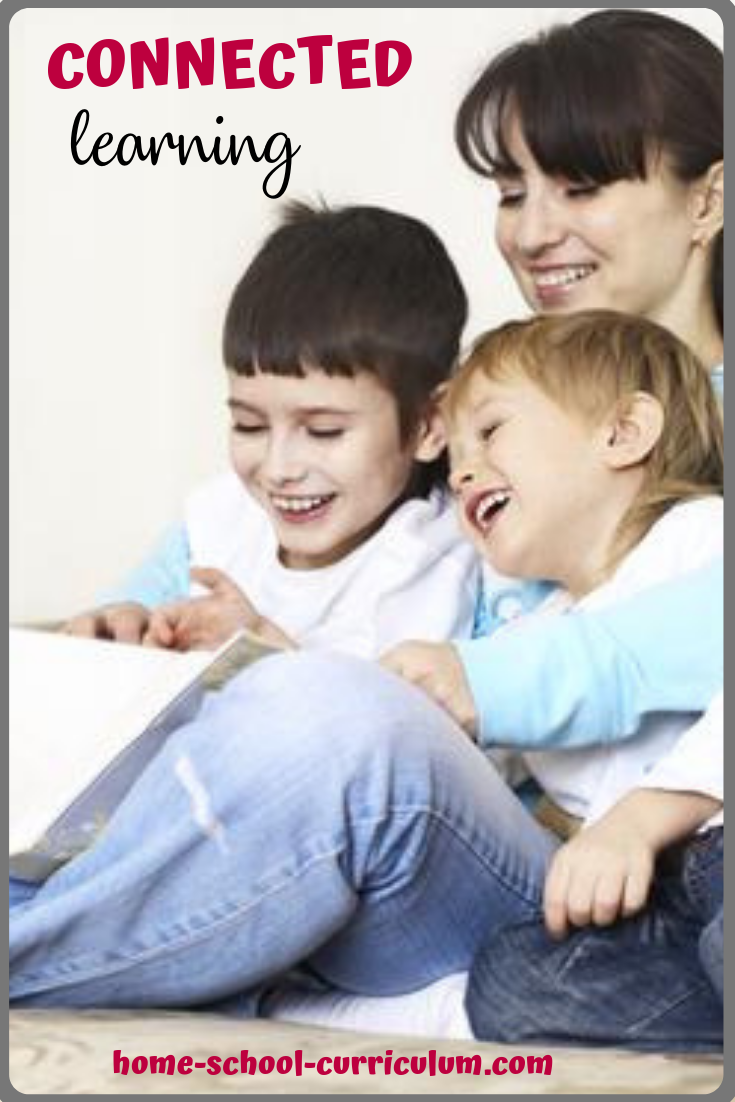News, Articles & Tips
Connected Learning
by Debbie Strayer

As a young education student in college, I learned how to create unit studies. I took a topic, say ice cream, and connected literature, math concepts, science, and activities. It was exciting to my students and interesting to me. It brought a freshness to the way I approached teaching because I was fitting the skills inside a framework that included activities and real books, rather than just reading a textbook. But this was only the beginning of my adventures with connected learning.
As time went on, and I became a homeschooler, I started reading Ruth Beechick’s writings. She encourages integrating subjects together with a focus on meaning and ideas, not stopping with just learning facts about a topic. Skill learning, such as spelling, reading, and writing, is taught within the context of literature, history, and science, not as separate subjects. My understanding of teaching in a connected way made a great leap forward.
When you teach your child focusing on ideas, not just topics, critical thinking skills are built. While studying the Civil War, look for the people of great character from both sides, not just the names and dates of battles. Talk about why they did what they did and whether or not your child agrees with their actions. By moving beyond rote level learning, you teach your children how to understand and evaluate information. One of the ways to help children take learning from short term memory to long term memory is to connect it with meaning. Biographies are a great way to attach meaning to events you study.
As a parent of homeschool graduates, I can look back and say that whatever we did that was memorable was tied to this approach. When I would revert to less effective methods, I would get a list checked off, but nothing much in the way of long term learning. Even during our years of homeschooling high school, this method proved most satisfying. My children had learned the difference between genuine learning and learning to pass a test. This understanding is now a part of their thinking as adults.
When you think about how you teach your children and the time it takes to use this approach, don’t think in terms of what it takes out of your daily schedule now, in time and effort. Think in terms of the view of learning that you are planting in their hearts and the years of fruit it will bear. When true learning has taken place, there really is no going back. Aren’t you glad?
How is this method used in the Trail Guide to Learning?
We not only cover each subject, but every subject in the Trail Guide relates. It is a natural way of learning as topics flow from one to the other. Children learn best when subjects overlap and build upon a main concept.
For example, in Paths of Exploration, students learn how our country was discovered and explored, from Columbus to the Westward Expansion. While studying the life and explorations of Christopher Columbus, students learn about his travels, read about his life in their literature, map out his treks in their geography, learn how he used the stars for navigation in their science lessons, and tie in activities like making a model ship out of a milk carton. When your child is able to make all these connections, he will have better retention and a deeper understanding of the subject matter.
The more sensory involvement you have with one topic, the more likely you are to remember and use that information. As children learn, they will share their experiences through notebooking, presentations and hands-on activities. Art, cooking, music and games combine to give children a taste of the times and a personal connection with the content that is unmatched by reading alone.


Yes, yes and yes! We are nearing the end of POE and for the 1st time my two children ages 11 and 9 unanimously agree that they LOVE this curriculum. We used Sonlight Curriculum for years which is a great literature program with lots of biographies for long term memory but science, geography, art and language arts were not woven together seamlessly as Trail Guide is. I am so grateful for the hard work put into this curriculum so that my children and I can enjoy learning in such a joyful, fulfilling manner.